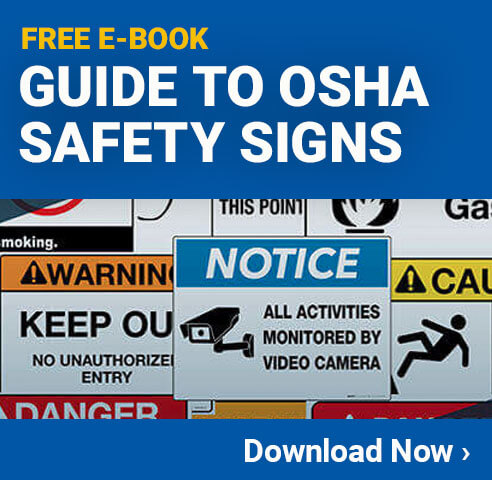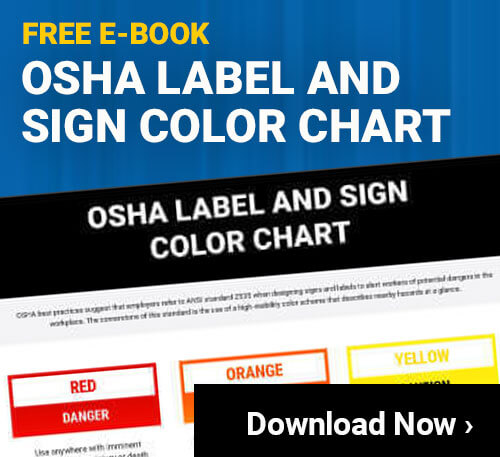
Known to the transportation world, title 49 describes the laws and regulations regarding the transport of hazardous materials also known as HMR. This specific government code includes the general requirements for shipment, the safety regulations, and the consequences that follow if those steps are not taken. While this article isn’t an exhaustive and dry list of regulations and rules when speaking about these dangerous materials, it does include the big takeaways that you must know if you are a part of this industry.
The first thing to know is who this law pertains to:
- Anyone who transports Hazardous Materials
- Anyone who causes transportation to be needed
- Anyone who indicates by marking or other means that a hazardous material is present when transporting material in commerce, as well as conveyance when there is no such material.
- Anyone who handles the package or transport conveyance to deliver hazardous materials in commerce, including required marking, label, placard, or shipping description during the entire shipping process. (This involves mainly pre-transportation functions including picking the labeling, packaging material, as well as providing information in case of emergency)
- Anyone who is involved in providing any sort of certified or sold as qualified packaging/labeling for components of Hazardous Materials in transport
This information can be found in section 171 of CFR 49
General requirements
Hazardous Materials cannot be shipped if the material is not registered or its fees correctly applied. These details are determined by the type of Hazardous Material, the weight, the quantity, and is dependant on how harmful the material is. The specific requirements are listed in Subpart G 107.601 of the CFR 49 document linked in the references below.
The material must be packaged correctly which includes the class of the Hazardous Material, an accurate description, labeled correctly, and the condition of the shipment must be in accordance to the code. This free GHS guide download of ours will help you as it lays out the important details on Hazardous chemicals and what you need in regards to appropriate labeling.
The last important general requirement to note is that the information associated with the shipment or the mode of transport (Railway, motor vehicles, aircraft, or vessel) will not, and cannot, be tampered with when the safety of the public is concerned. This includes any sort of labeling falsifications, altering or falsifying special permit documentation, or the selling of not regulation compliant safety labeling. If this does occur then the perpetrator will incur a hefty fine ranging from $450 for poor training that results in injury and up to $250,000 (individual)/$500,000 (corporation) as the maximum criminal penalty for those who knowingly break the code resulting in death, serious illness, severe injury, or substantial destruction of property.
Who is Responsible for What?
The Shipper:
The shipper is defined as the person or company that is having the Hazardous Materials transported. This list is the general requirements for every mode of transport (By road, air, vessel, or railway) There are special requirements and exceptions with each one, of course, that we will discuss further. But, for now, the shipper’s general responsibilities include:
- Determining whether a material meets the definition of a Hazardous Material
- The proper shipping name
- The class and division of hazardous material
- The correct identification number
- A code compliant Hazard warning label
- Appropriate packaging
- Appropriate marking
- Provided employee training
- The shipping papers
- Emergency response information including the telephone number
- Certification (dependant on way of travel)
- Compatibility with chosen travelmethod
- Correct blocking and bracing techniques while being shipped
- Placarding
- A security plan
- Code compliant incident reporting
The Carrier:
The carrier is defined as the entity that provides the shipping service from the time the material is placed in their hands for transport to when the material is handed off to the recipient. The carrier’s responsibilities are often very similar to the shipper’s because it’s incredibly important in these shipments to make sure that everything is double checked and ready to go as to not incur fines for all parties, serious injury, or even death.
- The Shipping paper
- Placard and marks on vehicle
- Loading and Unloading
- Compatibility with mode of shipment
- Blocking and bracing material for transport
- Incident reporting
- Security Plan
- Provided Employee training
Transport by Air, Motorway, Vessel, and Railway
More than 3 billion tons of what the FAA , FHWA , USCG , and FRA enforcement agencies declare as Dangerous Goods (hazardous Materials) are transported each year. The regulations that pertain to each mode of transport are covered thoroughly in the article CFR 49 Parts 174-177.
These include and are not limited to the specific safety training that must be known and implemented in each mode of transport. The proper loading and unloading procedure that is dependant on the type of material, as well as the amount, falls under the specified safety procedure to keep the material secure.
To provide a clear and complete mutual understanding while using this mode of transport, the cargo facility must be notified of the shipment as well as a copy of the shipping paper given to the carrier so they know the correct procedure to follow. Any sort of discrepancies regarding the shipment(s) must be reported to the shipping method’s corresponding agency listed above by telephone or electronically. This will come into play during the inspections completed before the materials are shipped and once the materials reach their destination.
Special Permits
Some of these requirements can be marked as exempt with the correct paperwork that anyone can find on the Hazardous Materials information center website: http://www.phmsa.dot.gov These exemption permits are issued by specific authorities in different departments of The Pipeline and Hazardous Materials Safety Administration (PHMSA) in accordance to the Hazardous Materials Regulations (HMR). To obtain these exemptions, there must be an acute unusual circumstance for the material in question to receive an approval. It also must be within reason as to not overburden commerce transport.
What’s Next?
As the leading expert in safety labeling we can confirm that all organization, safety marking, and code compliance efforts are the very first steps in making tasks and operations go smoothly. This is what we do best! We exist to assist you in your endeavors to keep everyone safe and code compliant with your safety labeling needs. You will want to check out one of our LabelTac® printers to get this ever present project done. We also have several guides that may help as well, including our GHS , floor marking (for potentially separating Hazmat materials from non-dangerous materials), and our OSHA HazCom guides.
Resources
- Code of Federal Regulations Title 49 Document, parts 100-177
- https://www.phmsa.dot.gov/about-phmsa/phmsas-mission
- https://www.fmcsa.dot.gov/regulations/hazardous-materials/how-comply-federal-hazardous-materials-regulations
- https://www.faa.gov/hazmat/what_is_hazmat/undeclared_hazmat/
Similar Articles
- Hazardous Materials Identification System (HMIS Labels)
- Hazardous Waste Disposal
- Lockout/Tagout Program (How To Control Hazardous Energy)
- MIL-STD-129: Military Marking for Shipment and Storage
- What is HAZCOM? (Hazard Communication Definition + OSHA Standards)
- Understanding the OSHA 300 Log and Other Incident Paperwork
- Improving Workplace Electrical Safety
- Process Safety Management
- Industrial Floor Marking Guidelines


